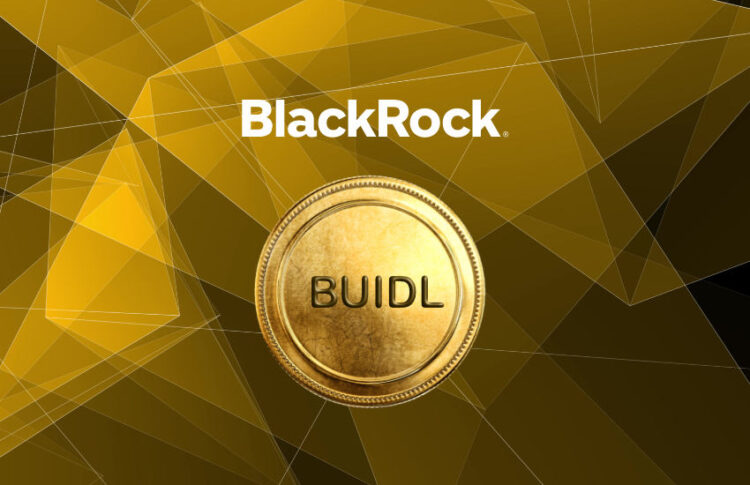Stablecoins maintains a commanding presence in the digital finance ecosystem. With a combined market cap exceeding $190 billion, they serve as a cornerstone of liquidity and utility across DeFi platforms, trading ecosystems, and payment networks.
They are quickly becoming indispensable for facilitating instant settlements and hedging strategies because of the stability, accessibility, and seamless integration they offer. USDT alone consistently ranks among the highest-traded cryptocurrencies, reinforcing the critical role of stablecoins in global crypto markets.
However, a new contender is gaining traction: tokenized money market funds (TMFs). BlackRock’s BUIDL, launched in March 2024, is one of this emerging class of blockchain-based financial products. TMFs like BUIDL tokenize real-world assets—primarily U.S. Treasury bills—offering a yield-generating, asset-backed alternative to traditional stablecoins.
CEO Larry Fink’s prediction that “the next generation for markets will be tokenization of securities” underscores BlackRock’s commitment to leading this shift. And BUIDL’s early success might be paying off. Within months of its launch, it achieved a $500 million market cap, making it the largest product in the $2.3 billion tokenized U.S. Treasury market. Although its current market cap sits at $87 million, this trajectory signals growing investor interest in yield-generating digital assets.
According to Thomas Cowan, VP of Tokenization at Galaxy, TMFs represent “a macro shift in financial technology,” delivering stable, predictable returns backed by tangible assets. But can TMFs truly rival the stronghold of stablecoins in digital finance, as Fink hinted?
TMFs’ Key Advantages: Transparency and Asset-Backed Yields
Tokenized money market funds appeal to risk-averse investors by addressing key vulnerabilities associated with stablecoins. Regulatory scrutiny over stablecoins’ opaque reserve practices has intensified, with figures like Senator Elizabeth Warren criticizing their alleged use in illicit transactions. As she remarked:
“Stablecoins are now the most common cryptocurrency associated with crypto scams and transactions involving sanctioned entities, overtaking Bitcoin. Groups dealing in illicit activities are incentivized to use stablecoins because they face difficulties accessing the U.S. dollar through traditional means but still want to benefit from its stability.”
In contrast, TMFs prioritize transparency and accountability. BlackRock’s BUIDL, for instance, represents a proportional share of its USD Institutional Digital Liquidity Fund, which cash, U.S. Treasuries, and repurchase agreements back.
This clarity appeals to investors seeking stable returns without relying on speculative market conditions. TMFs also enable fractional ownership and 24/7 trading, broadening access to traditionally exclusive markets.
Partnerships like Elixir’s sBUIDL derivative token unlock more liquidity, allowing holders to participate in DeFi without sacrificing underlying yields. These innovations demonstrate TMFs’ potential to bridge traditional finance and blockchain ecosystems.
The Persistent Strength of Stablecoins
Despite TMFs’ promising features, stablecoins retain significant advantages that solidify their position as the backbone of digital finance.
Liquidity and Integration
Stablecoins dominate with their vast market cap, unparalleled liquidity, and deep integration across DeFi platforms, payment systems, and trading networks. Their widespread adoption ensures seamless transactions, instant settlements, and a consistent store of value. These features are essential for traders, institutions, and retail users alike.
Accessibility
Stablecoins are designed for inclusivity. They cater to a diverse audience, from small-scale traders to institutional participants, enabling entry points into the crypto market with minimal barriers. TMFs, by contrast, face accessibility challenges. Products like BUIDL often require high minimum investment thresholds (e.g., $5 million) and securities law compliance, limiting their appeal to accredited investors.
Versatility
Stablecoins serve a wide range of use cases beyond investment. From powering liquidity pools to facilitating cross-border payments, their adaptability makes them a vital component of the crypto ecosystem. TMFs, while innovative, are more narrowly focused on conservative, yield-seeking investors.
RELATED: What Are the Chances of USDG’s Success in the World of USDC & USDT? Planet
Challenges for TMFs and Future Potential
For TMFs to compete more effectively with stablecoins, several hurdles must be addressed.
For instance, BUIDL’s focus on secure, yield-generating assets caters to a specific audience of conservative investors. However, it lacks the versatility of stablecoins, which are deeply integrated across DeFi, powering liquidity pools, lending protocols, and hedging strategies. Its high minimum investment threshold of $5 million limits accessibility for retail participants.
TMFs must also navigate the complexities of scaling while maintaining transparency and regulatory compliance, given the constraints surrounding securities laws.
Collaborations like those with Securitize and Elixir showcase the potential for innovation in this space, but widespread adoption will require sustained efforts to bridge traditional and blockchain-based finance.
Our Verdict: Complementary Roles, Not Competition
While TMFs bring notable advantages, they are unlikely to displace stablecoins in the near term. Instead, these financial instruments can coexist, fulfilling distinct roles within the digital finance ecosystem.
Stablecoins thrive as versatile, high-liquidity assets essential for day-to-day crypto operations, including trading, payments, and DeFi participation. TMFs, on the other hand, appeal to investors seeking secure, yield-generating alternatives. Their asset-backed structure and regulatory compliance make them attractive to those prioritizing stability over the speculative nature of crypto markets.
Innovations like Elixir’s sBUIDL program hint at potential synergies between the two. By unlocking liquidity in tokenized securities, sBUIDL allows users to access DeFi while maintaining exposure to BUIDL’s underlying yields. Such integrations could blur the lines between stablecoins and TMFs, fostering a more interconnected financial ecosystem.
Disclaimer: This article is intended solely for informational purposes and should not be considered trading or investment advice. Nothing herein should be construed as financial, legal, or tax advice. Trading or investing in cryptocurrencies carries a considerable risk of financial loss. Always conduct due diligence.
If you would like to read more market analyses like this, visit DeFi Planet and follow us on Twitter, LinkedIn, Facebook, Instagram, and CoinMarketCap Community.
Take control of your crypto portfolio with MARKETS PRO, DeFi Planet’s suite of analytics tools.”




















